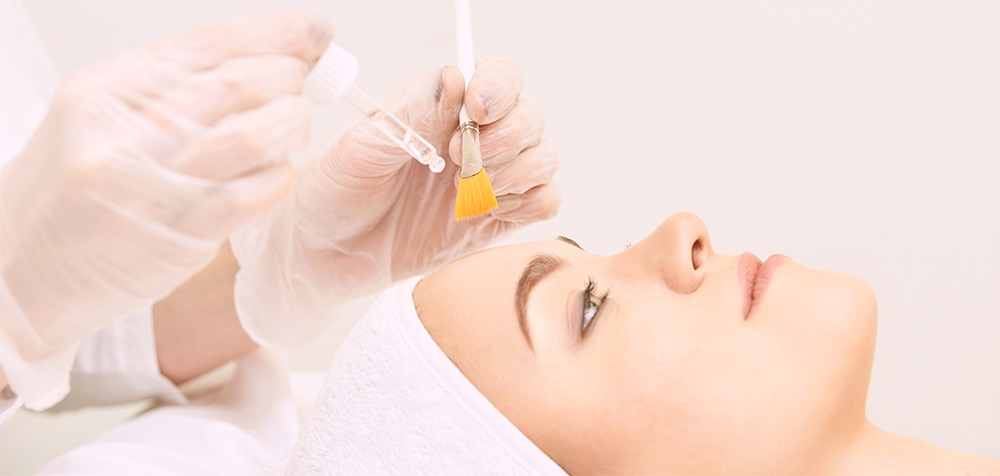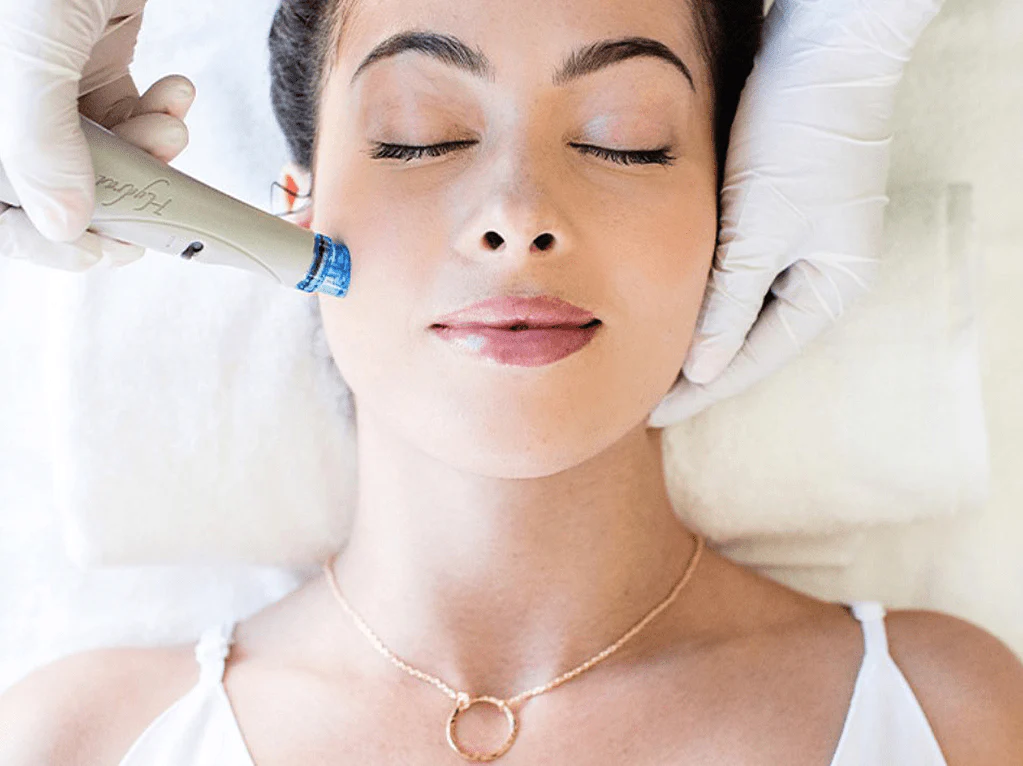Skin exfoliation Dubai is a process in which dead cells are removed from the surface of the skin. Generally, this is done physically or chemically Read More : hydrafacial dubai.
Table of Contents
In home physical methods (such as scrubs) or clinical methods (such as microdermabrasion), we massage the skin surface with certain methods to remove dead cells from the skin in an abrasive manner.
In the chemical method, with the help of chemical Skin exfoliation, we loosen the connection of dead cells to the skin so that they are separated from the skin surface.
Our skin naturally sheds dead cells every 30 days to make room for new cells to grow and divide. Sometimes the dead cells don’t fall off completely. If dead cells accumulate on the skin, the result is dryness, flaking, and clogged pores. Peeling the skin will help you prevent these from happening.
If you have doubts about the properties of exfoliation or don’t know what are the safe and effective ways to do it, don’t worry. Today we want to explain to you the topic of exfoliation and its appropriate methods.
Benefits of skin exfoliation for the body
Exfoliation beautifies your skin in several ways:
- According to the American Academy of Dermatology, exfoliation effectively brightens and improves the effectiveness of skin care products. Because with the destruction of dead cells, creams and other topical care products are better absorbed by the skin.
- Regular exfoliation can prevent clogging of skin pores and reduce acne and pimples.
- Long-term exfoliation can increase skin collagen production. Collagen is the main factor behind the beauty, radiance and youth of your skin. Increasing this protein improves skin flexibility and reduces fine lines and sagging skin.
Physical skin exfoliation
Physical skin exfoliation is the oldest exfoliation method. The thick blue and white bags that have been present in Iranian bathrooms since ancient times are actually tools for exfoliation. There are many ways to physically exfoliate.
You can use a loofah or scrub in a circular motion on your face to remove layers from your skin. The good thing about physical exfoliation is its simplicity.
Remember that our goal in exfoliation is not to make our lips blister or our skin red. Redness or burning of the skin after home exfoliation can be caused by skin damage, so you don’t need to rub your skin! Gentle circular movements on the face are effective enough.
To perform physical Skin exfoliation at home, you can use ready-made scrubs or use the methods of making homemade scrubs that are widely available on the Internet. You can also use leaves, pens or exfoliating pads. Scrubs are sold in drugstores and cosmetic stores and have a cream-like texture. Be aware that face and body scrubs are different and body scrubs are usually stronger. Some scrubs are specifically designed for different skin types, for example, if you have sensitive skin, it is better to get a scrub suitable for sensitive skin.
Now that you are familiar with physical peeling at home, let’s talk about clinical methods. Of course, these methods are also performed in spas and some hair salons; But we advise you to do these things only in specialized skin rejuvenation clinics. First, before performing clinical exfoliation, it is necessary to examine your skin by a doctor in order to choose the appropriate method for your skin type. Secondly, the specialist doctors of the clinic constantly monitor and check the peeling tools and devices and if they are worn out, they are replaced or repaired.
Physical exfoliation methods in the clinic include the following, all of which are performed at Serenity Clinic by the most experienced specialists and the most up-to-date tools:
Types of Physical Skin exfoliation
Microdermabrasion: is a skin exfoliation method that is performed with the help of very small crystals or a diamond tip device. Microdermabrasion can be effective in removing fine lines, tightening, smoothing skin texture and color, and removing some skin spots. For more information, you can refer to the microdermabrasion article on the White House Clinic website.
Hydrodermabrasion : a method similar to microdermabrasion, which is much more than a simple exfoliation. This method performs exfoliation without the need for crystals, rejuvenates the skin by massaging it, and effectively hydrates the skin by using an antioxidant serum. For more information, you can refer to the Hydroderm Abrasion article on the White House Clinic website.

Chemical skin exfoliation
In chemical Skin exfoliation, weak acids, retinol and enzymes are usually used to exfoliate the skin. These methods, like physical exfoliation, can be applied both at home and in the clinic.
For chemical Skin exfoliation at home, you can use chemical exfoliators available in the market or browse the internet and learn how to make a chemical exfoliator with ingredients available in the kitchen. In general, home chemical peels (if used correctly) are much more effective than physical home peels.
chemical Skin exfoliation, like physical methods, should be done with caution; Because there is a risk of damaging the skin. We recommend that if you want to use chemical peels on a regular basis, be sure to consult a dermatologist about the ingredients, how to use them, and how much to use them.
Types of chemical Skin exfoliation
Alpha Hydroxy Acids (AHA)
These acids include a group of water-soluble acids that are usually extracted from sugary fruits. The most famous AHAs are:
- Glycolic acid is extracted from sugarcane
- Lactic acid is found in milk and some vegetables
- Citric acid found in citrus fruits
- Tartaric acid that is present in grapes
- Malic acid is extracted from apples
These acids help to remove a layer from the skin of the face so that new and more uniform cells in terms of color take the place of the old cells. Compared to other acids used for skin exfoliation, AHAs have a more superficial action.
Depending on the type of acid used, AHAs can help with:
- Dark skin spots such as age spots, melasma and scars
- Large pores
- Fine lines and surface wrinkles (low impact)
- Inconsistency in skin color
Beta hydroxy acids (BHA)
These acids are fat-soluble and can penetrate deep into the hair follicles and remove excess oil and dead cells from the skin pores. Beta hydroxy acids are mostly used to treat acne and sun damage. The most famous BHA is salicylic acid, which is mainly used in the treatment of acne, but it is also useful for improving redness and general inflammation of the skin.
Retinoic acid
Retinoic acid is a type of retinoid and is considered a derivative of vitamin A. These exfoliators are usually used in clinics and are less commonly used in the production of home exfoliating products. Retinoic acid does a deeper Skin exfoliation than BHA and is effective in removing scars, blemishes and fine lines.
The difference between home and clinical exfoliation
The main difference between these two exfoliation methods is their effectiveness. For example, microdermabrasion can be done with home kits, but the results of clinical microdermabrasion are much stronger. Hydrodermabrasion is an amazing method that can only be done in the clinic and by experts; This is because a very special antioxidant and hydrating serum is used in it.
As for chemical peels, at-home products tend to be less acidic. For this reason, they have less peeling effects. In addition, in the clinic, skin problems are carefully examined in order to identify the most suitable acid to solve these problems. Then, at the same time as using acids, we apply other special drugs to your skin that make exfoliation more effective and reduce its side effects.
The fact is, if you can afford a clinic peel, these methods are definitely more effective. Although effective Skin exfoliation at home does not cost much, it is cheaper than clinical exfoliation.
If you do exfoliation only as part of your skin care, using home Skin exfoliation after consulting a dermatologist is sufficient. But if you want to treat problems like scars, blemishes, wrinkles, and the like, you’ll likely need a clinical peel.
Who should not Skin exfoliation?
Those who suffer from acne should definitely consult a dermatologist about Skin exfoliation. If your acne is chronic or cystic, your skin is naturally inflamed and exfoliation will cause more inflammation. In this case, there is a possibility of leaving dark spots on the skin known as hyperpigmentation. These spots are more common and last longer in those with dark skin. So be careful.
Do not exfoliate if you have any wounds, sunburn, damage or infection on your skin. This recommendation also includes cold sores. In these times, your skin needs hydration and medical care more than exfoliation.



